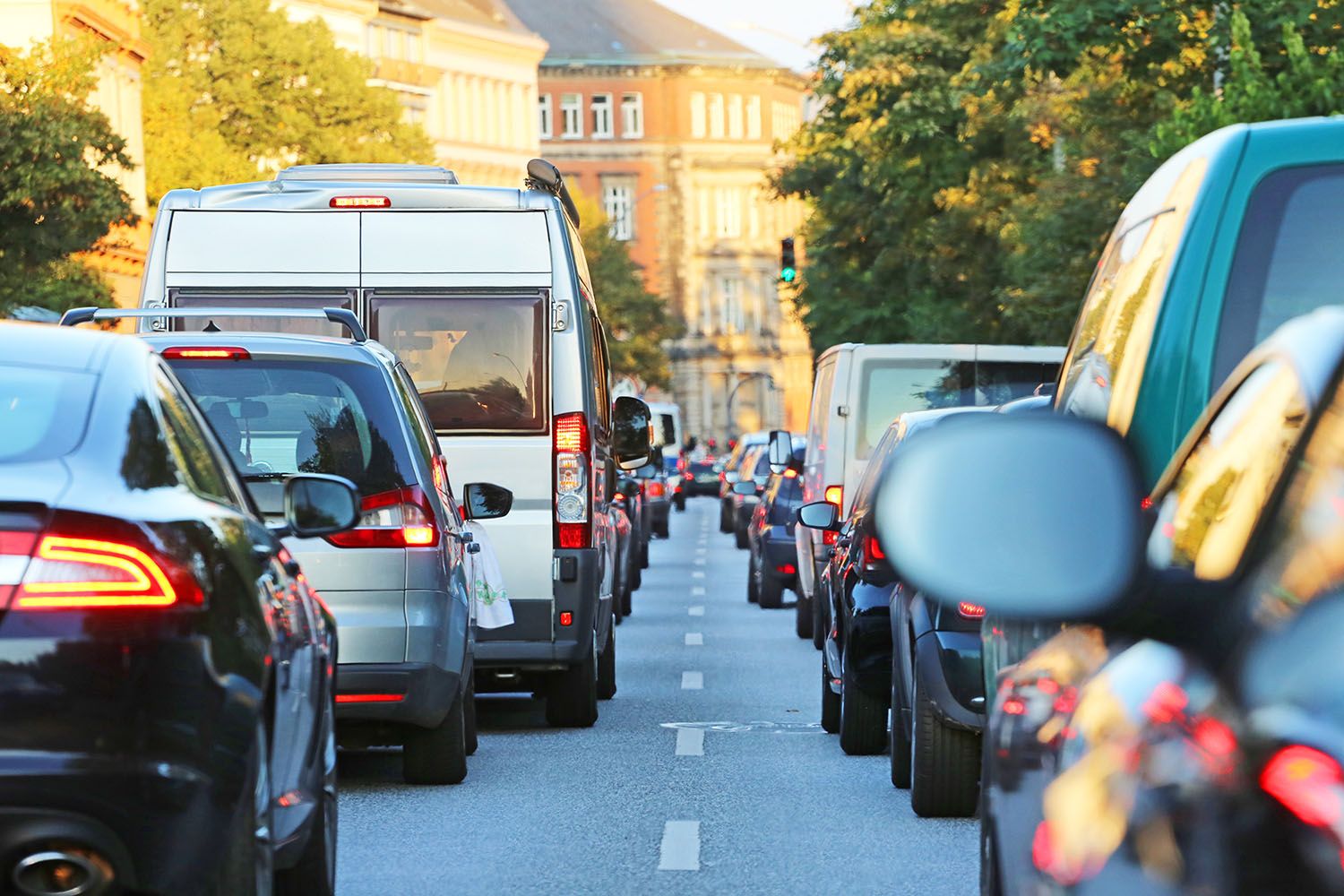Here's how ITS can reduce climate impact
The climate crisis is acute, and we must reduce carbon dioxide emissions by 90 percent to meet the 1.5-degree climate target set by the Paris Agreement. The transport sector accounts for 14 percent of the emissions, and Intelligent Transport Systems (ITS) is an important piece of the puzzle to create a fast and real change.
In 2015, the 193 member states of the UN adopted the 2030 Agenda for Sustainable Development. The global goals are the most ambitious agenda adopted by the countries for a sustainable future for all, and an important starting point for battling the acute climate crisis. Intelligent Transport Systems (ITS) is a way for the transport sector to contribute.
The transport sector itself stands for almost 30 percent of the carbon dioxide emissions in the European Union. Being a big part of the problem does not exclude the transport sector from also being a part of the solution. Laura Coconea, the Head of Innovation at SWARCO, is convinced that the transport sector has an opportunity to reduce climate impact.
“Traffic efficiency supports the environment. It is rather simple — if travel time becomes shorter and traffic goes smoother, less fuel will be used and less carbon dioxide emitted.”

Laura Coconea
SWARCO Head of Innovation
What is ITS and C-ITS?
ITS, Intelligent Transport Systems, is applications that in some form use information or communication systems to create a dynamic function in a traffic or transport system.
The next step of ITS is called C-ITS, Cooperative/Communication Transport System. It is about making vehicles communicate with each other and the rest of the infrastructure, allowing information to be shared and used to coordinate traffic.
Integrating a variety of ITS subsystems with connected and autonomous vehicles can significantly improve mobility, reduce traffic congestion, and save lives by reducing traffic accidents, while also reducing carbon dioxide emissions. This technology makes it possible for ITS and C-ITS to contribute to a safer, cleaner and more efficient transport system.
How can ITS help reduce climate impact?
Fuel consumption strongly depends on the number of times vehicles stop and accelerate. Based on this, efficient and well-functioning traffic signals can reduce fuel consumption and CO2 emissions by 10-20 percent. In addition, signal improvement gives an improved benefit for accessibility and road safety, which is socio-economically valuable.
“In the context of transport and climate, ITS will play a big role. There is a global shift to low carbon solutions in transportation, also in railways, navigations and public transport.”
The more obvious reason why ITS is helping to reduce climate impact is that with bus or bike priority, you can prefer public transport or bikes to cars. A more attractive public transport system can lead to more people taking the bus and leaving the car at home. Bus priority can do this by creating more reliable timetables, fewer unnecessary stops and overall smoother rides. Several studies have been conducted regarding bus priority in cities in the Nordic countries. For example, in Helsinki, the delay for buses is decreased by as much as 40 percent. Allowing cities to prioritize bikes in the traffic will make biking more attractive as biking will be a safer, smoother and less chaotic experience.
Smart priority and strategically deciding who gets a green light or even a green wave is also a way to maximise the use of the existing infrastructure. This is important since every stopped vehicle draws 0.05 kg extra fuel and emits an additional 0.15 kg of CO2.
Future ways of change
ITS is a huge field with a lot of innovative technologies that can be valuable for achieving the global goals. For example, there are multi-functional traffic signals that use air solution technology to measure air quality and then manage traffic with this as a factor.
“There are a lot of new ideas and technologies that will change the way the transport sector works. I am convinced that we, as solution providers, have an important role in support reducing carbon dioxide emissions,” says Laura Coconea.

Examples of areas of ITS
SWARCO and ITS
SWARCO is one of Europe’s leading and fastest-growing suppliers of ITS solutions. The company has a long history of working with the development of advanced traffic management systems and is continuously working on all topics related to travel management, from electric mobility to efficiency in traffic overall. The company works both with how to continue exploiting the traditional infrastructure in the most environmentally-friendly manner, as well on how to invest in new ways of mobility that do not include gas emission.
SWARCO offers a variety of solutions for traffic management, including priority systems in traffic signals, offering a full set of features: from easy positioning, to advanced systems and operational monitoring. On top of that, SWARCO also offers projection, installation, and operation throughout the whole life length of the system.
Traffic signals and smart priority
A major area in ITS is traffic signals and how they are optimised. With the technology called Smart Priority, you can choose to make priorities for different parts of the traffic, such as buses, cyclists and emergency vehicles. Smart Priority calculates how long it takes between crossings and traffic signals, and then customises the signal switch to make the traffic as streamlined, safe and efficient as possible. It can also minimise the standstill time and create something called “green waves”, where a lot of traffic signals turn green directly after one another. This way, you can choose what to prioritise and, for example, make it easier for emergency vehicles to get through traffic faster and safer.
Strategic Traffic Management
Fully-integrated platforms for environmental data monitoring and traffic management can have great impact. This includes the provision of pollution alerts, the creation of pollution-smart itineraries for bikes and pedestrians, and strategic traffic management through automatic and semi-automatic traffic management measures triggered by the air quality levels. Strategies are activated and implemented through all the available channels, from social networks to Variable Message Signs and Traffic Light plans.
Parking guidance solutions
Studies show that 30 percent of the traffic in urban areas are vehicles looking for parking spots. With parking guidance solutions, drivers can be shown to a parking spot faster, which improves the traffic capacity on the road. It also makes it easier to fill up the existing parking spots in a more efficient way. Once a driver gets to the car park, there is something called parking guidance to help them find a free parking spot.